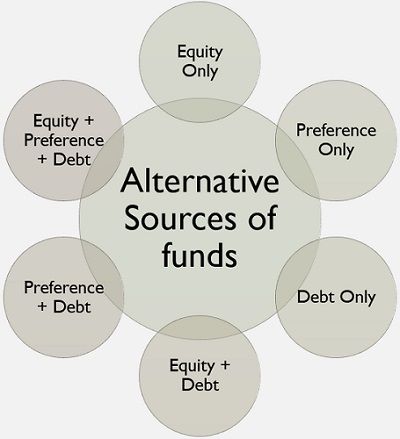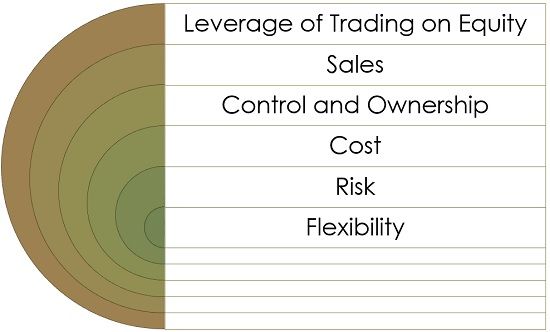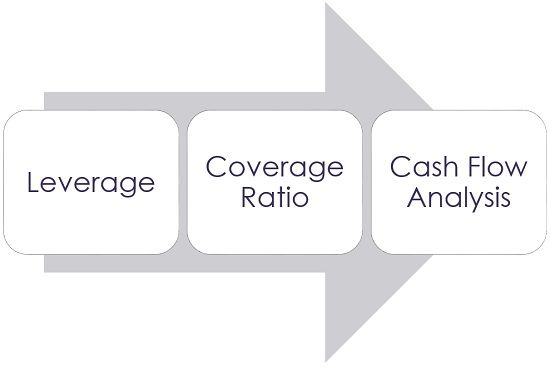Definition: Capital structure, as its name itself signifies, is the composition of the capital employed by the firm from various sources of finance. It comprises of both owners capital (i.e. equity capital and preferred capital) and debt capital. The capital structure of the firm represents its investment and financing strategy.
While deciding the ideal capital structure for the firm, the ultimate aim of the firm, i.e. maximization of shareholders worth, is always given priority. Further, the firm’s financial requirement and the cost of capital are the two factors which are helpful in determining the source and amount of capital to be raised.
Capital Structure Decision
The decision concerning the form of financing to be utilized, the amount to be raised and the proportion in which they are to be raised in the overall capitalization, is termed as Capital Structure Decision. These decisions are very important as they influence the shareholder’s returns.
Optimal Capital Structure
The choice of the blend of these forms of financing is known as Capital Structure Mix. The optimal capital structure is the one that has the right and balanced mix of debt and equity. It is based on:
A best debt-equity mix is the one that uses leverage to the maximum extent possible while the risk of loss of control, is at its minimum. The mix should be flexible enough to adjust according to future financial needs. The capital structure must be so simple to manage and easily understandable to the interested parties.
In addition to this, the firm should employ debt to such a level that does not harm the firm’s solvency. Hence, it should be borrowed as per the firm’s potential to pay.
Factors Determining Firm’s Capital Structure
- Alternative sources of funds: There are a number of alternatives available to the firm, for raising funds from various sources in varying proportions. The capital structure can include:

- Equity capital only or
- When the company is already existing, it can use preference capital only or
- When the company is already existing, it can employ debt capital only, or
- A mix of equity and debt capital in varying proportion, or
- A mix of preference and debt capital in varying proportion, if the company already exists, or
- A mix of equity, preference and debt capital in varying proportion.
- Factors Affecting Firm’s Capital Structure: There are a number of rules which are to be considered while deciding the financing pattern:

- Leverage of Trading on Equity: It implies that the company uses a mix of debt capital, preference capital and equity capital, wherein the long-term debt adds to the equity shareholders earnings per share when the firm returns are in excess of the cost of debt.
- Sales: The firm’s capital structure also depends on its sales, i.e. when the firm’s sale is prospected to remain stable, then the firm can raise a high level of debt. This is so because the firm’s stability in sales indicates that the firm is capable of meeting its obligations in a timely manner. In the same way, growth in sales, also indicates that the firm is likely to raise debt capital for financing the investment proposals.
- Control and Ownership: The finance manager should ensure that the existing management control and ownership should not be interrupted, as the issue of fresh equity shares will change the existing control and ownership. On the other hand, if more debt has been raised, then there is no dilution of control and ownership, but the degree of financial risk will increase.
- Cost: An optimal capital structure is such that the overall cost of capital is minimum whereas the earnings per share are maximum.
- Risk: As per this notion, the firm should rely more on the equity share capital instead of the debt capital, because the higher the use of debt in the capital structure, the higher is the commitment as to interest payment.
- Flexibility: The firm’s management should pick that capital structure mix which is easily adjustable as per the changes in the requirement of funds in the upcoming time.
The capital structure of a company indicates the extent to which a company trusts the external sources of finance, as well as the extent to which the internal funds are employed to back expansions.


Leave a Reply